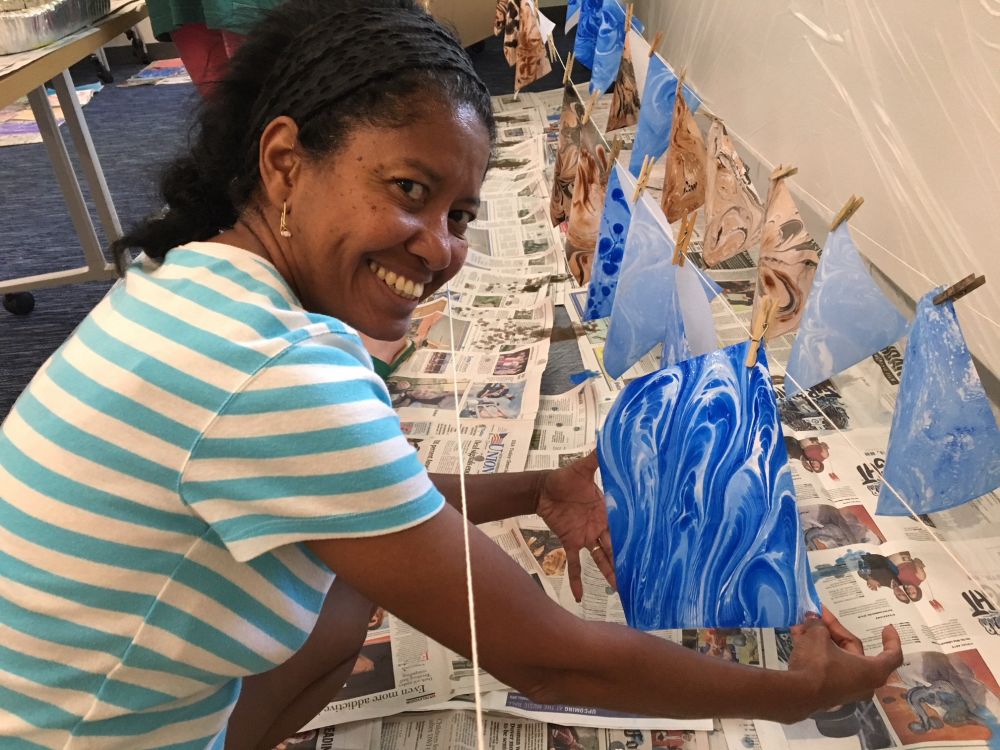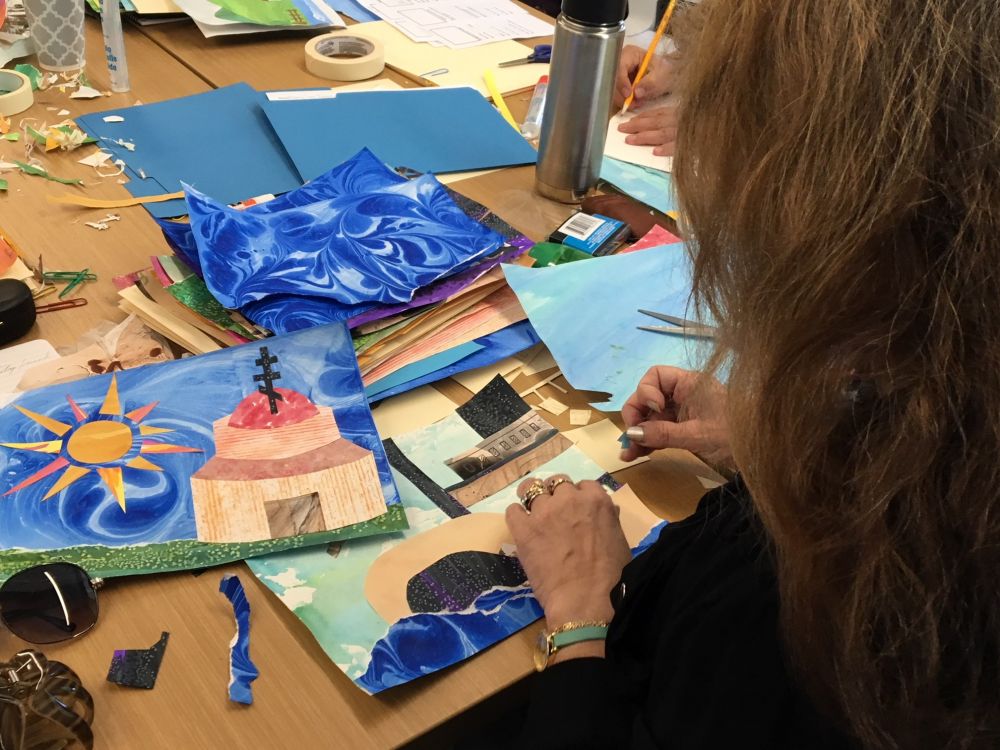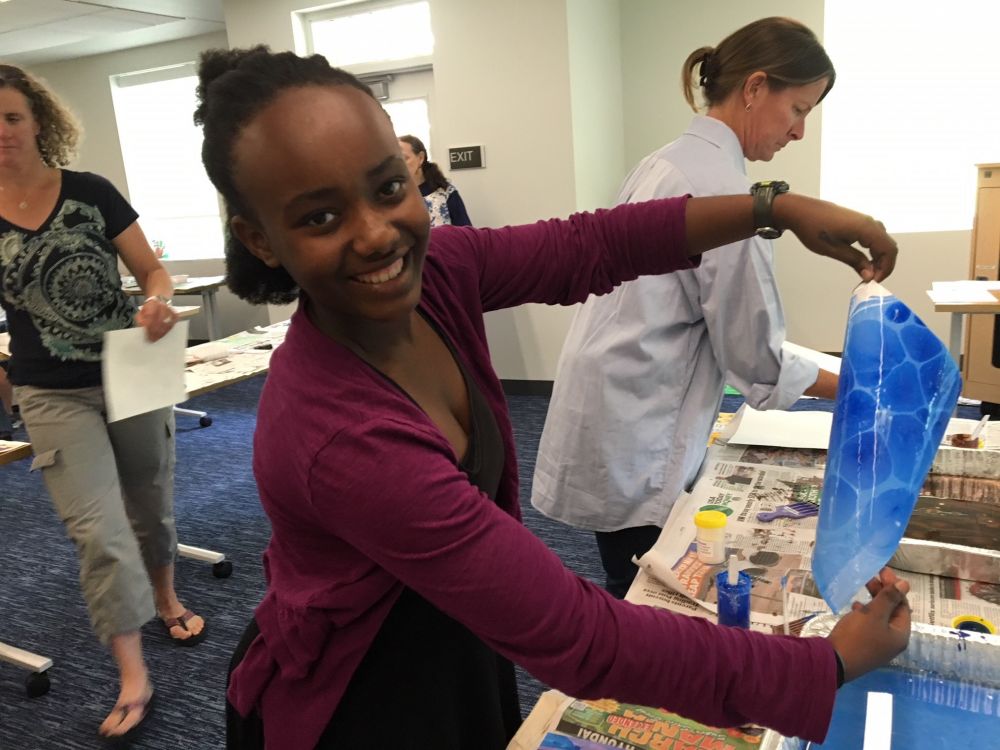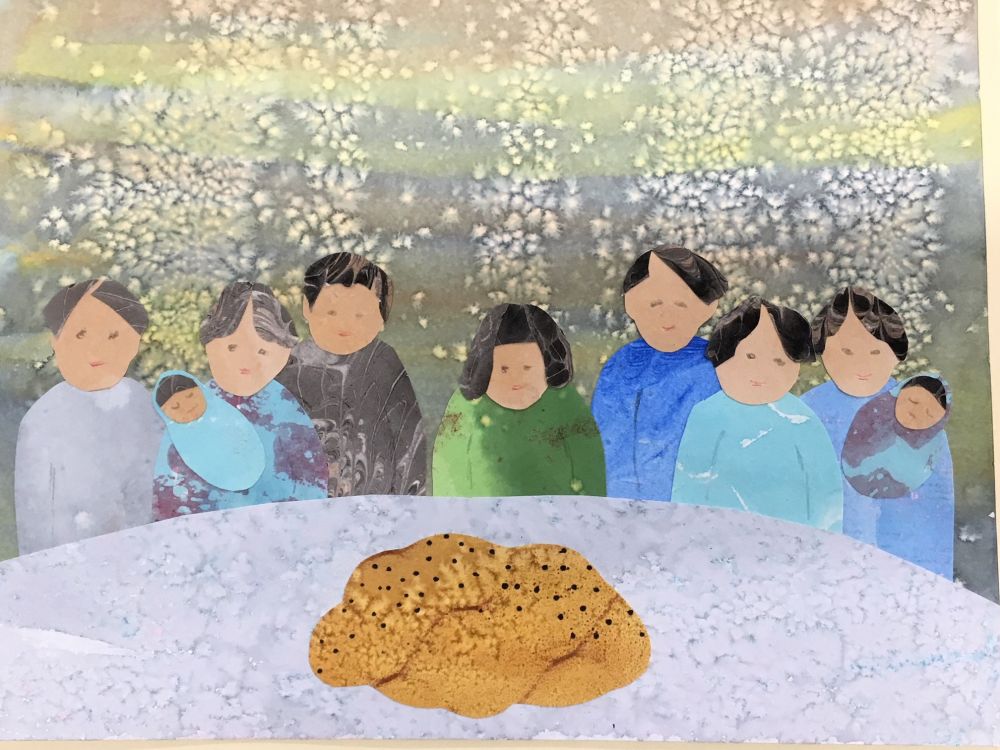Using image-making to help students tell their stories
See all blog posts
 What makes a good story? “It’s when I become you,” an ESOL student once said in his class. Much of Beth Olshansky’s workshop for teachers, “Creating Identity Texts in the Multilingual Classroom,” offers a process - beginning with art - to create stories that help readers enter a story so deeply they become the child they are reading about.
What makes a good story? “It’s when I become you,” an ESOL student once said in his class. Much of Beth Olshansky’s workshop for teachers, “Creating Identity Texts in the Multilingual Classroom,” offers a process - beginning with art - to create stories that help readers enter a story so deeply they become the child they are reading about.
In this New Hampshire Humanities-supported program, teachers from across New Hampshire are telling stories about migration - their own family stories - from Belarus, Ireland, Cuba, Kenya, Scotland, Canada and other nations. Beth, Director of the Center for the Advancement of Art-Based Literacy, is leading them in a process to create handmade collaged books about their own family’s journey to the United States. After a week-long training, the 24 teachers will lead their students in developing literacy skills through this process. As Beth describes her method, “Image Making within the Writing Process," students begin by creating their own portfolios of colorful, hand-painted textured papers. These papers not only spark ideas but also become the raw materials for constructing stunning collage images. As students literally give shape to their ideas through cutting and pasting, they are able to rehearse, draft, and revise their stories long before setting pencil to paper.
 Beside the teachers in a long-windowed classroom at Southern New Hampshire University is a display of mentor texts, trade picture books that tell stories of migration and can offer models or a needed idea for a detail, to the artist/writer/teachers. The mentor texts include The Colour of Home by Mary Hoffman, Grandfather’s Journey by Allen Say and I Was Dreaming to Come to America, small stories drawn from the Ellis Island Oral History Project, edited by Veronica Lawler.
Beside the teachers in a long-windowed classroom at Southern New Hampshire University is a display of mentor texts, trade picture books that tell stories of migration and can offer models or a needed idea for a detail, to the artist/writer/teachers. The mentor texts include The Colour of Home by Mary Hoffman, Grandfather’s Journey by Allen Say and I Was Dreaming to Come to America, small stories drawn from the Ellis Island Oral History Project, edited by Veronica Lawler.
 On the second day of the training, teachers painted on textured paper and began creating collages. On the third day, Beth selected one teacher’s collage to display in the “Artist Frame” and the class began a full-group discussion. The discussion process: the artist tells about his work, classmates comment, then the class begins to generate language of action with the question, “What is this object (or person) doing?” In this way the writer is beginning to imagine text that is about action and serves to bring the reader close. Beth has found that when students (and teachers) move from pictures to words, it supports language acquisition as artists/writers seek to find the best words to capture the meaning of their visual texts.
On the second day of the training, teachers painted on textured paper and began creating collages. On the third day, Beth selected one teacher’s collage to display in the “Artist Frame” and the class began a full-group discussion. The discussion process: the artist tells about his work, classmates comment, then the class begins to generate language of action with the question, “What is this object (or person) doing?” In this way the writer is beginning to imagine text that is about action and serves to bring the reader close. Beth has found that when students (and teachers) move from pictures to words, it supports language acquisition as artists/writers seek to find the best words to capture the meaning of their visual texts.
 The stories taking shape didn't sidestep the tragedies and memories that the families of many teachers brought here: Irish mothers' loss of their babies after the mold set in on the fields of potatoes; long-term conscription of young men in Belarus that forced families to flee; a grandmother who loved flowers and enormous blossoms. These details are in every collage.
The stories taking shape didn't sidestep the tragedies and memories that the families of many teachers brought here: Irish mothers' loss of their babies after the mold set in on the fields of potatoes; long-term conscription of young men in Belarus that forced families to flee; a grandmother who loved flowers and enormous blossoms. These details are in every collage.
The project humanist is Judy Sharkey who is an Associate Professor of Education at the University of New Hampshire, and the GATE CITY Project Director, a partnership between UNH and the Nashua School District supporting ESOL teacher certification. Judy brings her own scholarship and that of Dr. Jim Cummins of the University of Toronto and with the teachers discusses the success of using dual language and identity texts with students in the classroom.
Written by Terry Farish, New Hampshire Humanities
Photos by Beth Olshansky